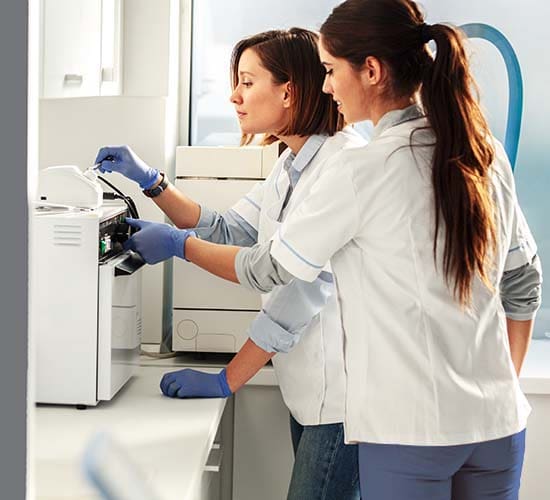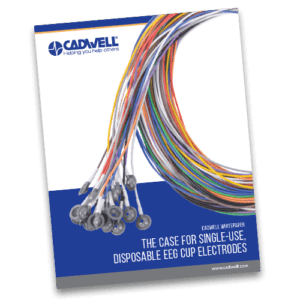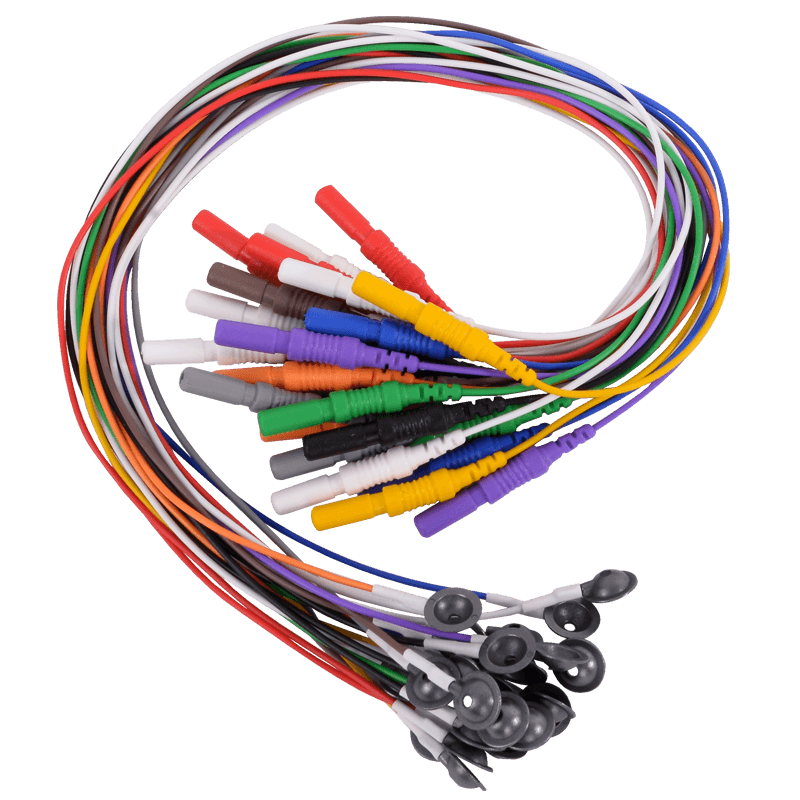The Case for Single-Use, Disposable EEG Cup Electrodes
Follow the research
The case for switching from reusable EEG cup electrodes to disposable EEG cup electrodes is based on multiple studies and the demand for Universal Precautions within the workplace. “Use of single-use electrodes and research on scalp infection and infection reduction interventions are warranted.”1 In a multicenter study, 22.6 % of cleaned reusable EEG cup electrodes and lead wires were found to contain bacteria that were potential risk or at risk for infection, including MRSA and Chicken Pox.2
Semi-critical care and disinfection
EEG and EP electrodes and their lead wires are categorized as semi-critical patient care items because they may come into contact with mucous membranes (nose, mouth, eyes, etc.) or non-intact skin (as in skin that has been prepped using an abrasive to lower impedance).
Semi-critical items require high level disinfection, which warrants autoclave or 10 to 30 minutes of full liquid immersion in an EPA-approved high-level disinfectant chemical sterilant. “High-level disinfection of semi-critical patient care items cannot be achieved by a spray or wipe method.”3

Patients with healthcare associated infection (HCAI) cost 2.8 times more per case to treat, stay in hospital 2.5 times longer and are seven times more likely to die.4
Use of single-use EEG cup electrodes may be associated with overall hospital savings.5
The largest outbreak of Hepatitis B in a Healthcare setting was attributed to outpatient EEG labs
A chief technician with a high viral load and inadequate infection control practices in the six partner clinics were responsible for what is probably the largest documented outbreak of Hepatitis B in a health care setting.
14,000 cases of Hepatitis B were acquired from 1991 to 1996 at six EEG labs owned by the same physician and chief technician, with one death reported during those five years. Centers for Disease Control and Prevention report that HBV can live on an inanimate surface for one week.
Hepatitis B virus (HBV) is transmitted primarily by sexual contact and intravenous drug use. Transmission in a health care setting occurs through contact with blood from an infected patient or health care worker, usually via a needle-stick injury.6
OSHA’s Standard Precautions and Body Substance Isolation includes all body fluids and substances. As this is federal law, a neurodiagnostic technologist may not elect to provide a lower level of disinfection for electrodes.7

Cadwell Whitepaper
Download the Whitepaper:
The Case for Single-Use, Disposable EEG Cup Electrodes
Sources
- Albert, N. et al. Contamination of reusable electroencephalography electrodes: A multicenter study. Am J Infect Control. 2018 Dec;46(12):1360-1364. doi: 10.1016/j.ajic.2018.05.021. Epub 2018 Jul 9.
- Albert N. et al. Contamination of reusable electroencephalography electrodes
- Scott, N. Infection Prevention: 2013 Review and Update for Neurodiagnostic Technologists. Neurodiagn. J. Missouri: ©ASET. 53:271-288, 2013
- Finnegan, C. The Current Debate: The Case for Disposable EEG Electrodes. JET (2007) Vol 33(1): 67-68
- Scott, N. Infection Prevention: 2013 Review
- Scott, N. Infection Prevention: 2013 Review
- Fearon, M., MB, FRCP(C). Risk Management – Practical Considerations. © J Can Dent Assoc 2000; 66:542
Use Cadwell Disposable EEG+ Cup Electrode Packs to reduce the clinical and financial implications of health care associated infections (HCAI)
- Customize your kits with 12-inch, 48-inch, 60-inch, and 98-inch lead lengths, offered in a variety of 10-, 15-, and 25-packs
- Provide quality signals and improve impedances with larger 10 mm silver/silver chloride EEG+ cups that hold more conductive gel
- Open just one 25-lead pack per patient setup: Each pack contains two (2) each of blue, yellow, purple, orange, green, brown, and grey; three (3) each of black and red; and five (5) white disposable electrodes
Electrodes are available at the eStore in a variety of lengths and packages
- Disposable EEG Cup+ 12 in / 30 cm, 25-Pack
- Disposable EEG Cup+ 48 in / 120 cm, 10- and 25-Packs
- Disposable EEG Cup+ 60 in / 150 cm, 10- and 25-Packs
- Disposable EEG Cup+ 98 in / 249 cm, 15-Pack

